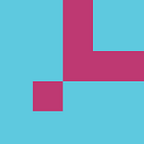 How people purchase and use energy has always been a source of debate. Who should I buy it from and are the prices fair? Should energy be government-run or privately owned and operated? How do I better control my usage?
How people purchase and use energy has always been a source of debate. Who should I buy it from and are the prices fair? Should energy be government-run or privately owned and operated? How do I better control my usage?
Fast-forward two decades from the 2015 United Nations Climate Change Conference and we — finally — have new globally agreed rules for how energy is bought and sold. Covering individual households through to corporate and government organizations, the sharing economy of energy can become a reality for, theoretically, everyone.
The central idea is that anyone — from one person living in a flat or an SME to a huge manufacturing plant or hospital operator — can buy and sell energy at will. With solar panels and wind turbines already installed on almost every building, we can all be energy traders as well as energy consumers. Likened to the early days of renting out a spare room on Airbnb, these new laws allow anyone to sell their excess energy, or buy extra supply at times when the market is cheap — and it’s as simple as changing the volume of our smartphones.
But the new rules only stipulate the freedom of the market: a digital platform for easily managing energy doesn’t exist — yet. With so many diverse sources (oil refineries, wind farms, and individuals generating energy beyond their personal needs) and so many potential users (such as collegiate universities with huge energy requirements) linking supply and demand is no mean feat.
Using digital code to solve complex challenges
Software Designers are adept at turning a complex picture into a simply structured program. They love detail and getting knee-deep in the granularity of a problem that — at first glance — seems impossible to solve. They are adept at turning their hand to the latest tech languages, cutting-edge platforms, and smartest databases.
To build an accessible platform on which to trade energy, you need to link up many different people, in real time. This means finding a way of creating a fast database that can keep up with all the trades happening all over the world.
You need to decide how user privacy works and ensure that everyone has a working wallet, in any currency, so they can execute their transactions. In addition, the platform needs to be easy to use for those who are not used to complex software platforms.
And with so many options — from blockchain and other decentralized ledgers to cloud-based platforms and a variety of different hosts — Software Designers need to know what the best approach is in order to solve the challenges they face. They need to understand what makes a platform fast and efficient, but also simple and elegant.
As our world becomes increasingly complex, there is a growing need to link more and more information over the internet using apps and programs. And, as a result, the expectations of all of us — not just coders — are higher than ever.
Finding people with a unique combination of knowledge, tenacity, curiosity, and determination to build these increasingly complex systems is not an easy task, especially when they must possess so many different hard and soft skills.
Software Designers are the code composers, and there’s still plenty to write in our quest to truly make the most of the technology we have at our fingertips.
